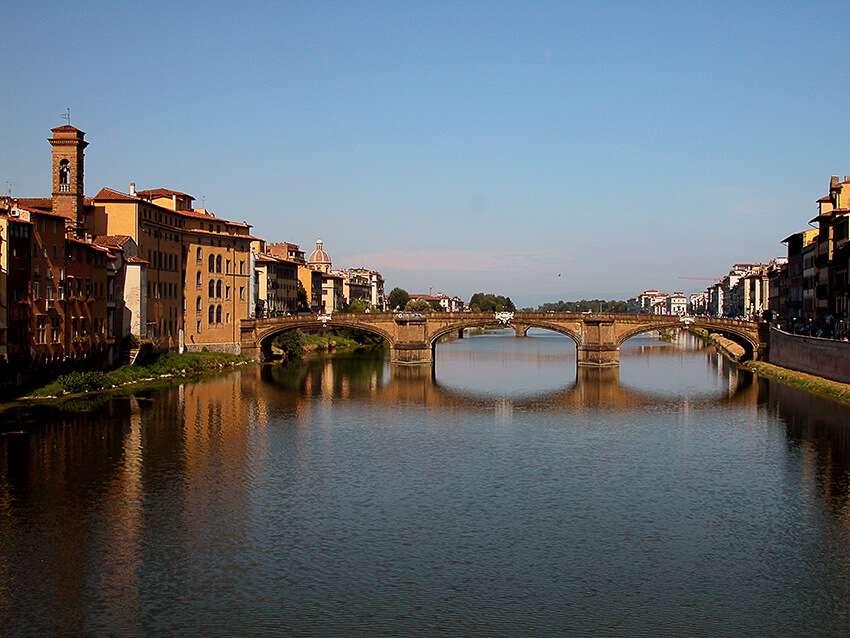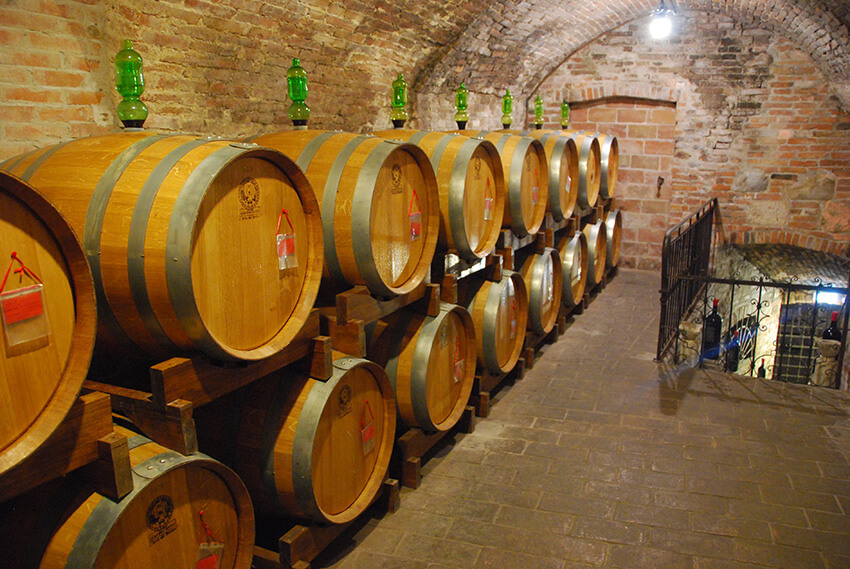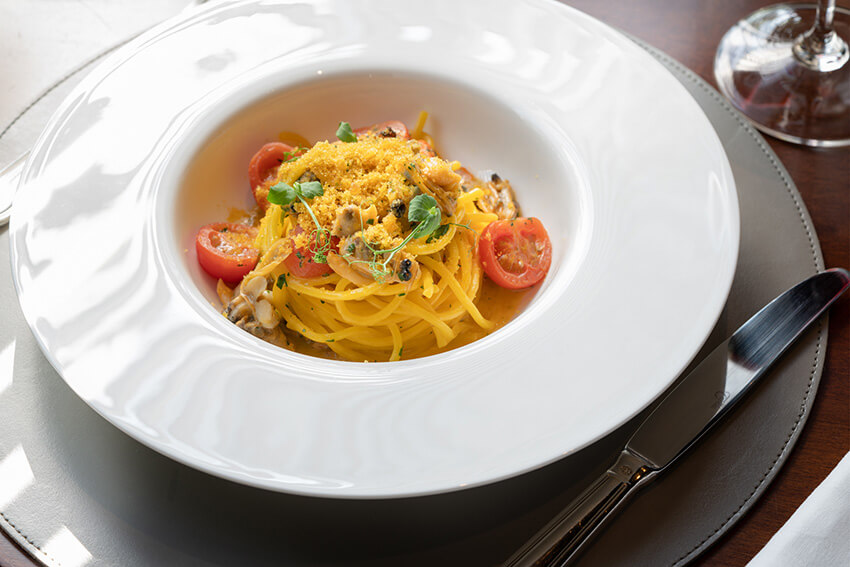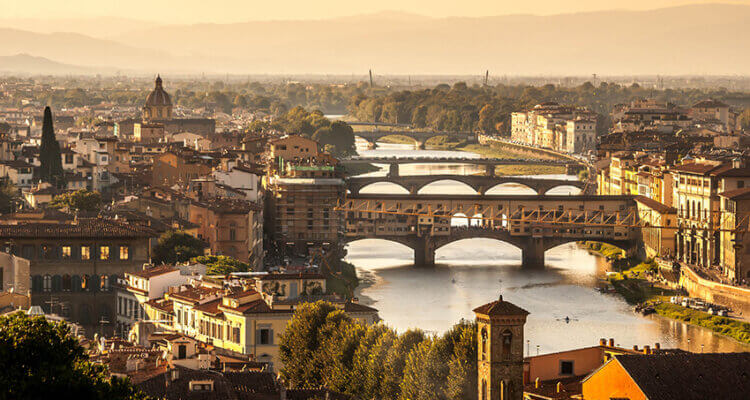Art, Culture and Fine Food in the Tuscan Capital
Duomo, Ponte Vecchio, Uffizi – almost everyone knows the Florentine attractions. But the Tuscan capital also has other treasures to offer. If you’re willing to leave the beaten path, you can look forward to exploring Florence: exciting art projects, surprising river cruises and a wine-rich region. Helpful here: tips from the pros. The concierges of the hotels belonging to the Lungarno Collection are always up to date and know the best addresses, exhibitions and tours.
Oltrarno: Artsy district in Florence
The district on the other side of the Arno exudes a charm all its own: “di là” – over there, as the Florentines say – there are fewer tourists around. Instead, local students, craftsmen, architects and aristocrats sit in the nice wine bars and trattorias. The neighborhood was created in the 12th century, when the population of Florence skyrocketed and the people in the old town could no longer find enough living space. To this day, studios and workshops can be found here, as well as art galleries, bookstores, enchanting churches and museums that can be visited at leisure and without crowds. Every morning, farmers set up their makeshift tables in the atmospheric Piazza Santo Spirito, selling flowers, fruit and the season’s vegetables. Borgo Santo Spirito and Borgo San Frediano are the arteries of the district. They score with many small stores, traditional workshops and cool eateries. The tiny Piazza della Passera is particularly idyllic, while Piazza Pitti is magnificent. The narrow alleys in between are an enchanting labyrinth in which one gets lost again and again and only too willingly.
Renaioli: City tour from the water

Until the middle of the 20th century, the Renaioli were still traveling on the Arno with their simple work boats to salvage building sand and stones from the riverbed. Today, their characteristic pole-guided barges are used for river cruises. From the water, the elegant palaces on the Lungarni are particularly visible. The bridges also present themselves in an unusual perspective. You glide silently past the Uffizi, under the jewelry stores of Ponte Vecchio, see – perhaps for the first time – the churches of Santi Apostoli and San Jacopo Soprarno. And, you learn that the beautiful Ponte Santa Trinità is the oldest wicker arch bridge in the world and has been rebuilt a full five times in its nearly 800-year history.
Exploring Florence on the traces of Tuscan Wine
The wines of Tuscany are legendary. If you want to not only drink them, but also learn about their production, book a tour to the vineyards south of Florence. The landscape alone would be worth the trip. Villages like Castellina, Gaiole or Greve are postcard-pretty. However, cellar visits accompanied by experts are considered the highlight. Wine production here has a centuries-old tradition, and getting your individual steps explained between gleaming steel tanks and ancient oak barrels is a unique experience. Each tour ends with a wine tasting and the opportunity to purchase a few bottles right where they were made.

Art & Culture
Florence is considered Italy’s cultural heartland, and in fact you’re more likely to see too much art here than not enough. Still, it’s worth looking for lesser-known projects. The American artists Sara Amrhein and Anna Rose, for example, open up the possibility of visiting an artist’s studio in private. Or you can visit Manifattura Tabacchi, a multicultural center with many different activities in a former tobacco factory. Also interesting are the city’s many highly diverse art galleries and the people who run them. Usually a phone call from the hotel concierge is all that is needed to make an appointment. Guests of the Hotel Lungarno already get their money’s worth – there, over 400 works of art by Picasso, Cocteau, Bueno and many Italian artists adorn the walls.
Exploring Florence with Craftmanship
Where else can you find that? A well over 100-year-old bookbindery, where antique writings are restored, but also individual paper objects are made to measure according to old techniques? A silk weaving mill with looms from the 18th century, on which fabrics are created according to very old but also very modern patterns? An art printer who produces small masterpieces in his studio? A bronze foundry, founded in 1925, whose employees handcraft artistic picture and mirror frames, but also fittings and lamp bases, piece by piece? In Florence there are still many traditional craft workshops where furniture, silverware or shoes are made as they were 100 years ago.
Dolce Vita in Florence

Pappa al Pomodoro, Schiacciata, Cantucci… – what is served in the typical Florentine Trattorias and Osterias can also be cooked at home. Provided you know how to do it. Cooking courses in a special ambience are offered, for example, by The Cooking Touch or Desinare. Here you learn to prepare Tuscan classics and other Italian specialties and are rewarded at the end with a delicious menu – fatto in casa, of course! For those who prefer just to be served food, the various restaurants of the Lungarno Collection are the place to go: At Borgo San Jacopo, star chef Claudio Mengoni creates taste sensations, while Antonio Minichiello serves up modern Italian cuisine with an international interpretation at Caffè dell’Oro.
Bella Figura in Florence
At the beginning of the 1950s, the young Marchese Giovanni Battista Giorgini organized the first fashion show in Florence and made “made in Italy” world-famous with very young couturiers such as Emilio Pucci and Roberto Capucci. It then took a good 30 years for Milan to establish itself as a fashion Mecca. But with Pitti Uomo, Florence still offers the most important men’s fashion fair in the world. The fashion school ‘Polimoda’ is known far beyond Italy’s borders. Those interested in the history of fashion should definitely visit the Museo Salvatore Ferragamo with its unique shoe collection – and perhaps the flagship store of the cult brand in the same Palazzo. Also of interest: the Fashion and Costume Museum housed in Palazzo Pitti, with 6,000 exhibits from the 18th century to the present day. And, the Stazione Leopolda, a former train station hall from the early 19th century that regularly hosts fashion-related exhibitions.



